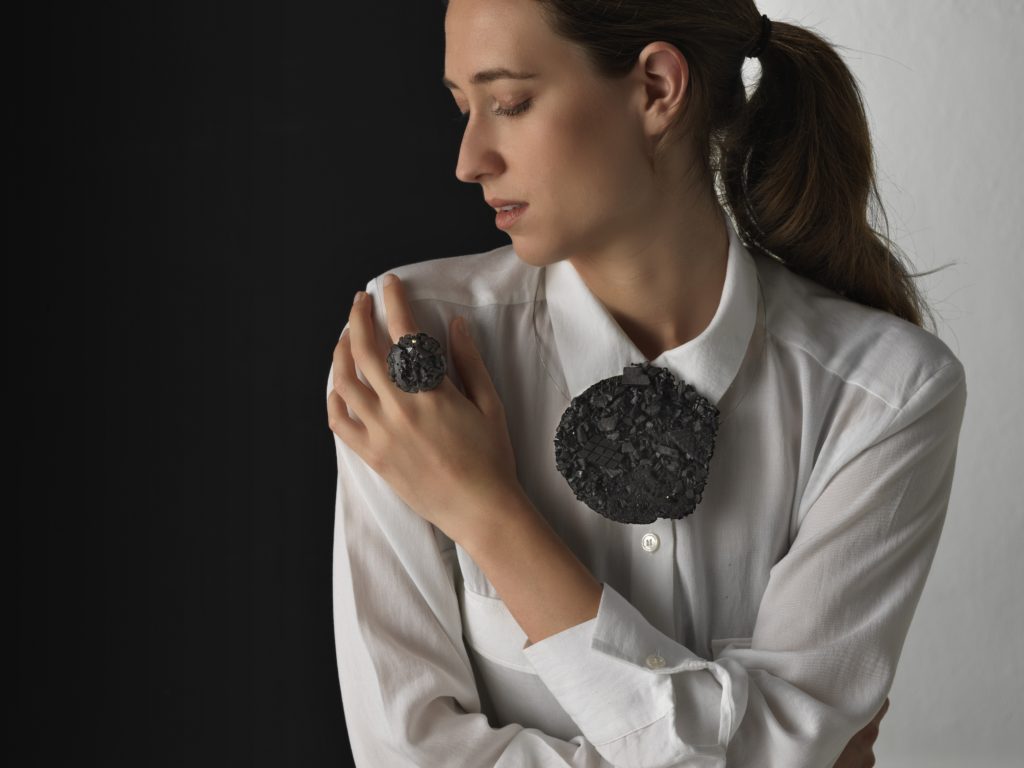WORTH Partnership Project took part in October of the Dutch Design Week presenting innovative
and unique design projects, also involving Dutch designers and companies, and a series of videos and webinars dedicated to designers that need tips and tools to make their business grow.
November 17th, 2020 – Design jewellery made with charcoal, modular lighting systems with remote control functions to customize the ambience of your surroundings, backpacks made of mycelium skin (a fungus organism): sustainability, customization and a strong incorporation of technology are the key drivers to the new generations of European designers who, under the WORTH Partnership Project hat, an initiative funded by the COSME programme of the European Union, took part in the Virtual Dutch Design Week from October 17th to 25th, 2020.
WORTH Partnership Project is Europe’s largest creative incubator, with 152 selected projects involving 345 partners from 34 EU-COSME countries – from France to Germany, Spain, UK, Italy, as well as the Netherlands, Slovenia, Moldova, Estonia, Sweden, Finland, Montenegro, Serbia, etc. This European Commission project is a unique laboratory where European designers can experience the benefits of transnational collaborations and the participation of more than 500 million people in an internal market.
Here below, some projects in detail, all the images can be downloaded here.
Identity 560
Nations involved: The Netherlands, Germany

A fully recyclable and/or compostable desk lamp based on advanced bio-materials, this is identity 560, the first interior product based on advanced bio-composites created by Jorn Behage, co-Founder at Arapaha and Thomas Köhler expert in the optimisation of (bio) composites for mass production.
All parts of this lamp can be easy replaced or dismantled. This to make sure that useful lifetime of the product is as long as possible, but this also improves the recyclability of the whole product trough easy disassembly. Another relevant aspect is that the whole product is assembled without any metal parts. No screws, no springs. Just the usage of the properties of PLA (polylactic acid) material to solve all technical, aesthetical challenges and guaranty fully recyclability of the components.
“This project will demonstrate that design in combination with advanced bio-composites provides an answer to the current challenging circular business concept,” declared Jorn Behage, co-Founder at Arapaha.
The Bib chair
Nations involved: The Netherlands, Finland

A modern, movable and durable stand-up chair in use and material, that’s The Bib chair by the Dutch company Tolboom Metal Specials, that designs and produce bespoke metal items for many different sectors such as machinery, architectural and contract seating, and Formesa, manufacturer of wooden components based in Finland: a completely handmade stand up chair that works mechanically that does not require power or batteries as with the electric models. In addition, all components are reusable, except the seat.
“BIB” stands for “Back In Balance” because you have to move to to get up, so it keeps you fit and healthier: You use your own muscles strength to rise up in to a standing position. In the side panels there’s a mechanism, such as a lever and it gets you into a balance. First you lift the armrest then, with a little pressure on the armrest, the seat comes up and you can easily stand up.
“The aspect “keep moving” triggered me to develop this chair. By means of your own strength and balance, you are able to generate the power/strength to get up yourself. Independent! The urgency around sustainability is increasing enormously. We must save energy, generate sustainable energy, build circularly, and pay attention to our health. We have developed this chair with this main idea”, explains Anton Tolboom, owner of Tolboom metal specials.
PineSkins Soft Wall tiles
Nations involved: The Netherlands, Spain

A collection of sustainable wall tiles that embraces the particularity of local landscapes and gives new value to those parts of the tree, that usually stay behind after tree cutting. That’s Pineskins Soft Wall tiles, made of PineSkins, the bark of a pine tree and local Spanish pine wood.
This project, which sees its genesis in the collaboration between the studio of designer Sarmite Polakova and the Spanish company Seistag, which accompanies companies in the process of innovation and internationalization, aims to create a product for interiors that embraces the particularity of local landscapes through surfaces and patterns seen in nature, such as the pine tree bark. However, the wood cutting industry considers the bark to be a by-product and is therefore discarded.
“The current state of our environment is in an urgent need for a change in consumer behaviour. The industry is currently draining too many resources from our planet, which puts the future of our nature in danger. Furthermore, the current trend of natural, sustainable and biomaterials introduces a change in the conventional material available on the market. Thus, PineSkins has already an advantage as it specifically addresses the overconsumption of forests, the pine tree. Pine tree bark is considered a by-product of the timber industry, but, when properly harvested and treated, it becomes a versatile material for various application possibilities with strong identity”, underpoints Sarmite Polakova, designer and owner of Studio Sarmite.
Biolea
Nations involved: Italy and the Netherlands

Replace the traditional animal skin with leather originating from mycelium, a fungus organism, to create a unique backpack. The revolutionary concept behind the “Biolea” project was conceived by MOGU, a startup which develops innovative technologies following the principles of circular economy, and the Amsterdam-based studio Officina Corpuscoli, which provides creative consultancy by developing its own and third-party projects.
The creation process was very complex: samples of the first materials were manipulated and tested to verify the feasibility of mechanical processing (such as stitching, embossing and thermobonding) and to validate their mechanical behaviour (tensile strength, tear and abrasion resistance). All these evaluations enabled the project partners to identify specific protocols and proved essential to fully understand the response of materials to processing. An accurate process that allowed the design of the product to be defined and a first prototype to be created.
Leather derived from mycelium is an unprecedented material in terms of sustainability and ethics as it is produced using residues from other industries, without the use of toxic chemicals and without the use of materials of animal origin. For all these characteristics, this material is able to take brand creativity to new levels,” says Stefano Babbini, CEO of MOGU.
ULTRA
Nations involved: Italy and Spain

Creating design jewellery starting from a new material such as coal: this is the concept on which Sara Barbanti, an Italian designer specialized in the creation of contemporary jewellery, and Synthelast, a Spanish company operating in the plastic materials sector, designing, developing and optimising polymers and elastomers, have worked on.
The wood used to create the charcoal for the works of art comes from the orchard of the designer’s family: when the plants die they have the possibility to continue living transformed into jewels, creating an indissoluble bond with the natural world. This material thus finds new life and expresses new potentialities that were previously hidden, inviting the observer to look beyond what is generally defined as beautiful or precious, opening up to alternative forms of art. A new type of jewellery is born that lives on contrasts: light and darkness, poor materials with more noble ones, organic forms combined with simpler ones.
“Ultra is a reflection on how a material generally considered waste and “poor” can become precious. Although charcoal is unusual, it is in fact a perfect material for creating jewellery: it comes from nature, it has a beautiful uniform black colour and allows to play with its random shapes to create something unique”, underlines Sara Barbanti.
Hi-lamp
Nations involved: Italy and Armenia
A brand new modular lighting system that makes it possible to create ad hoc solutions for each environment: this is the project on which Smooland, an Italian artisan design company specialising in the creation of design objects, and Ani Sahakyan, a young Armenian industrial designer, worked. Hi-lamp allows everyone to create the lighting they need, providing modules available in various shapes and colours that can find space on the wall, on the floor or on a table to create customised solutions that give ample space for creativity and fun. Thanks to the use of a dedicated app, Hi-lamp makes the home smart by allowing remote control of the modules.
“Our project aims to change the culture of lighting and its impact on people, creating an effective and unprecedented blend of design and technology”, say the designers at Smooland.



